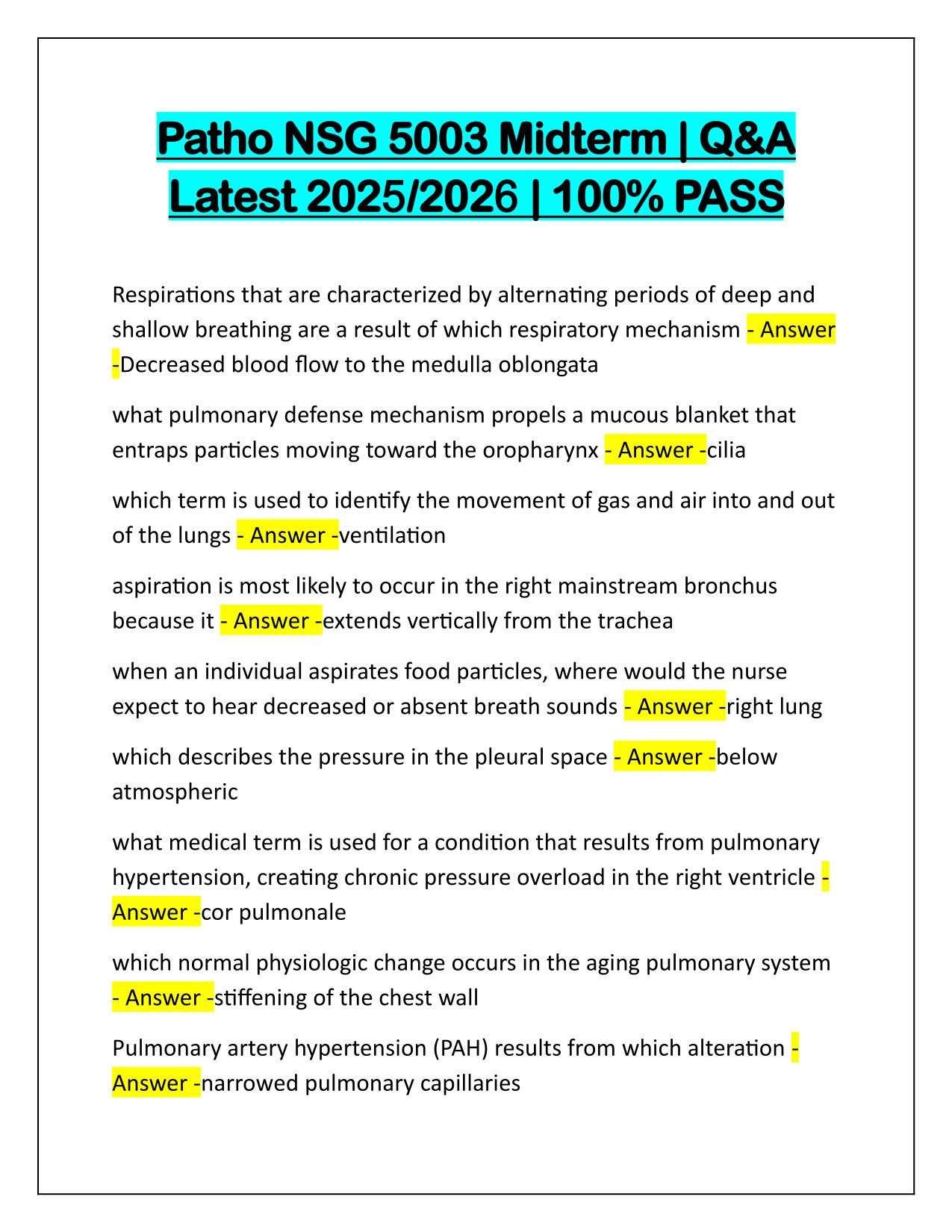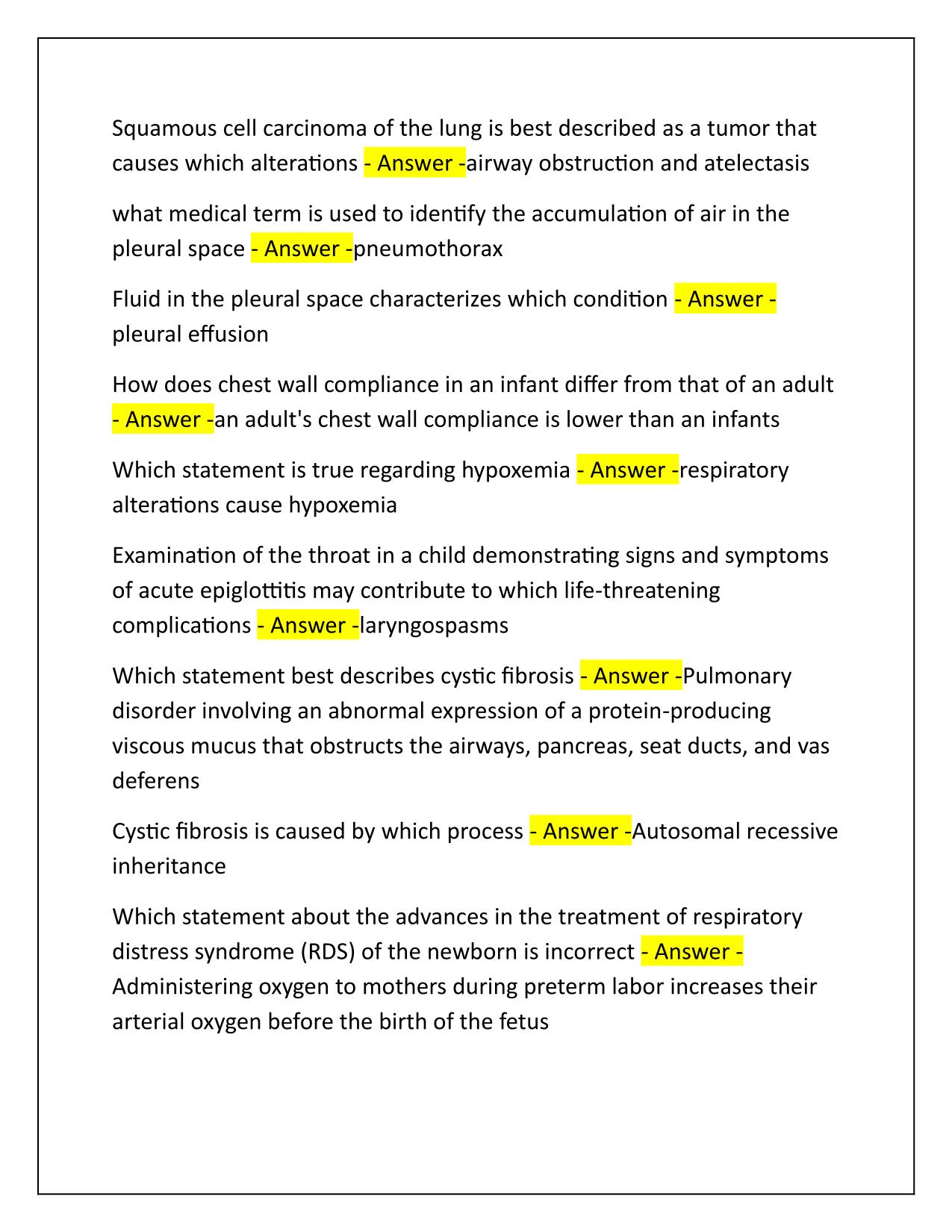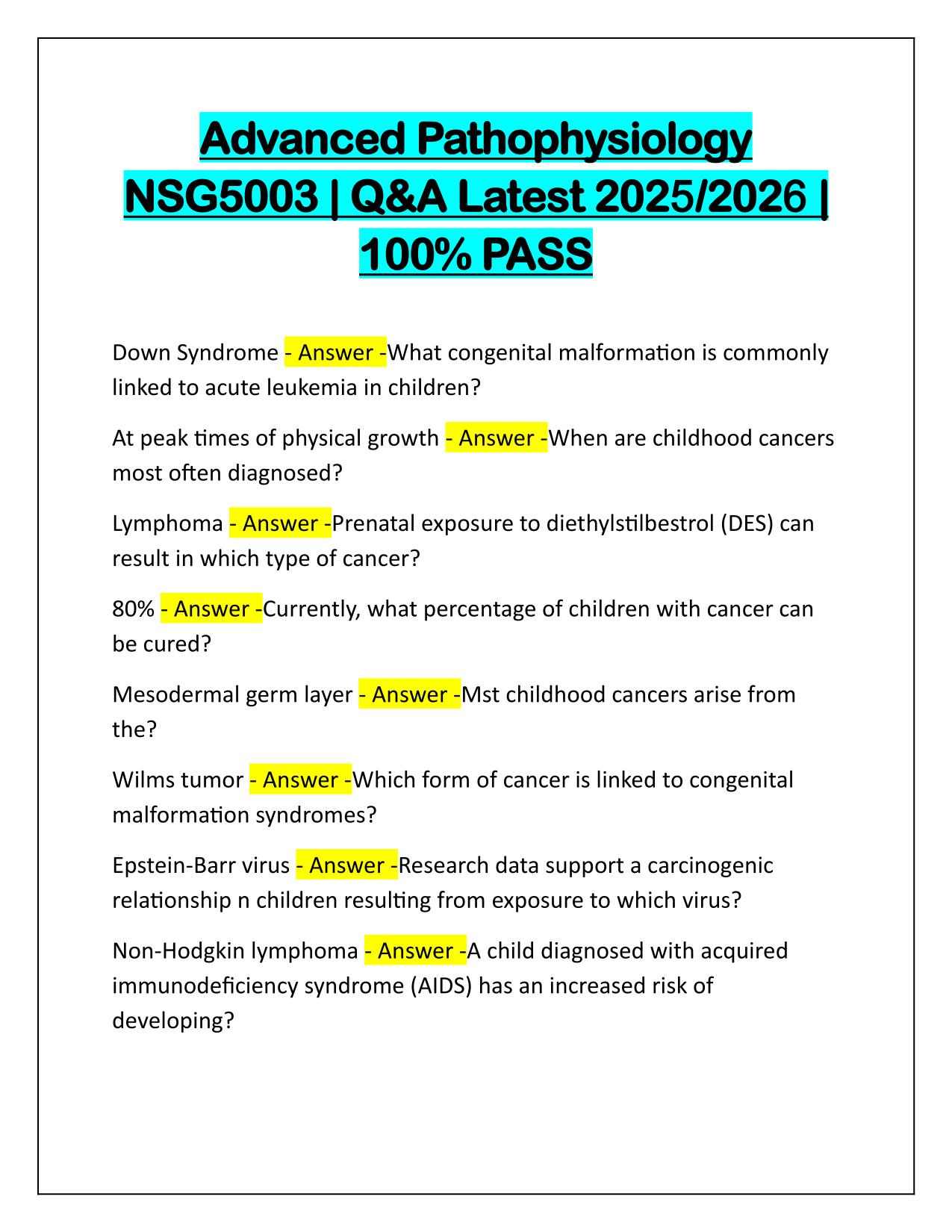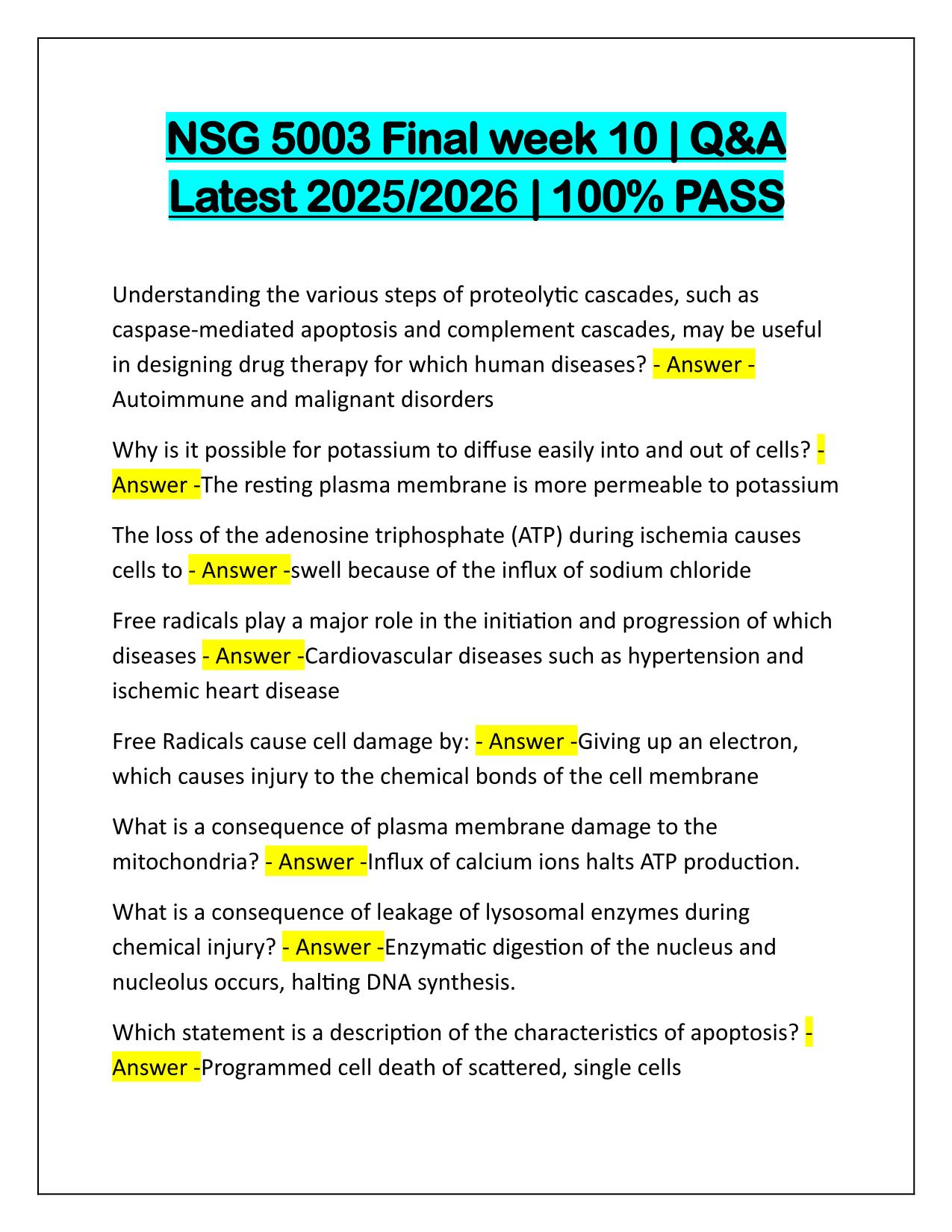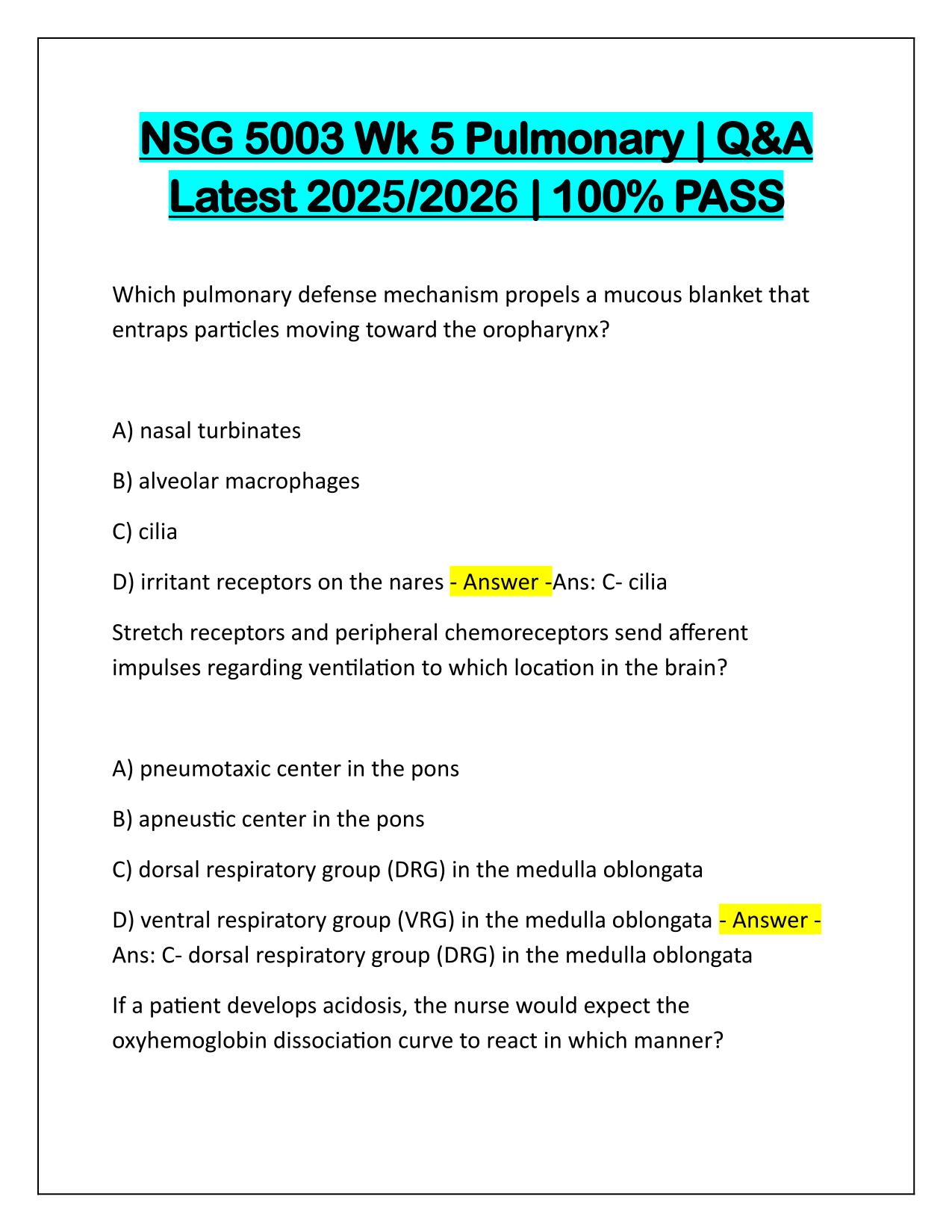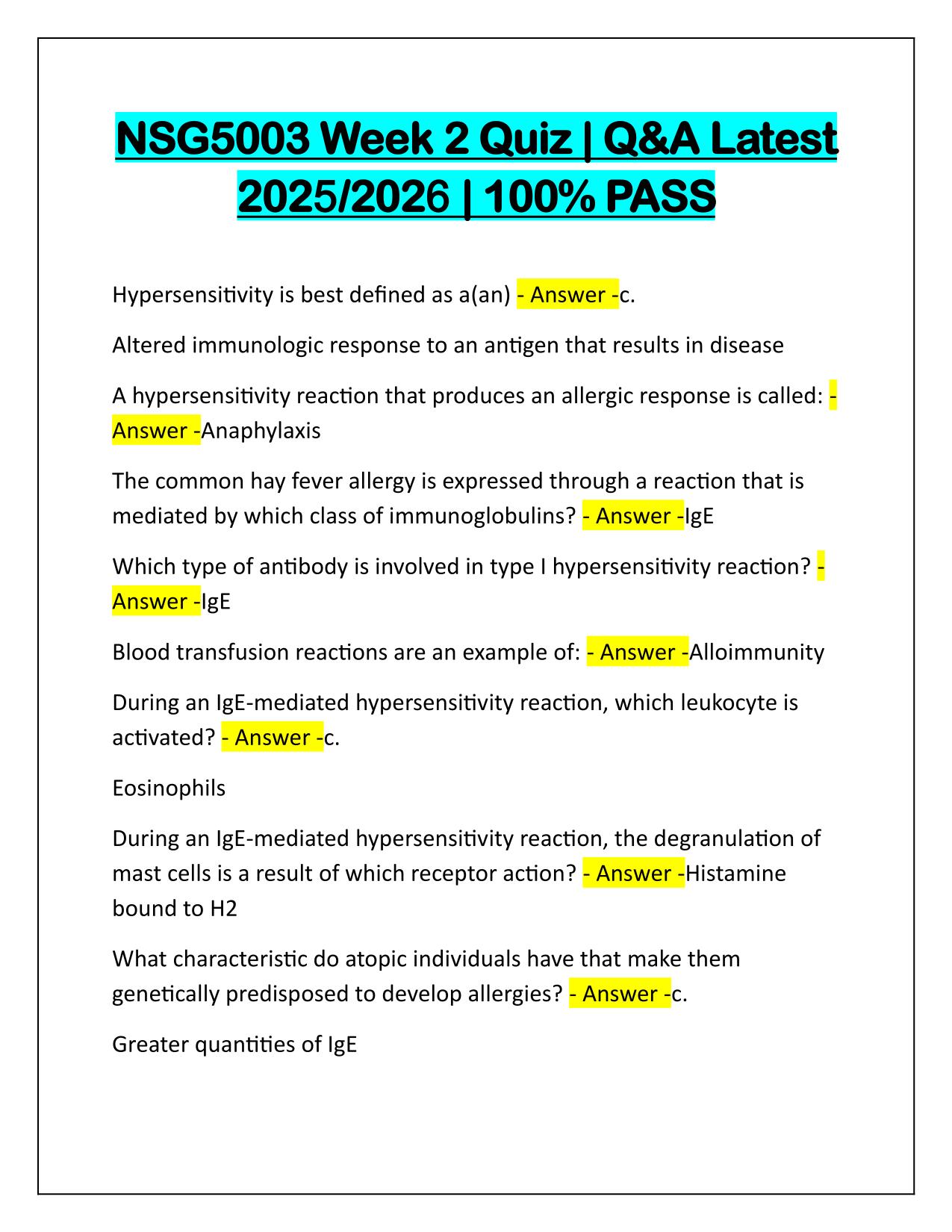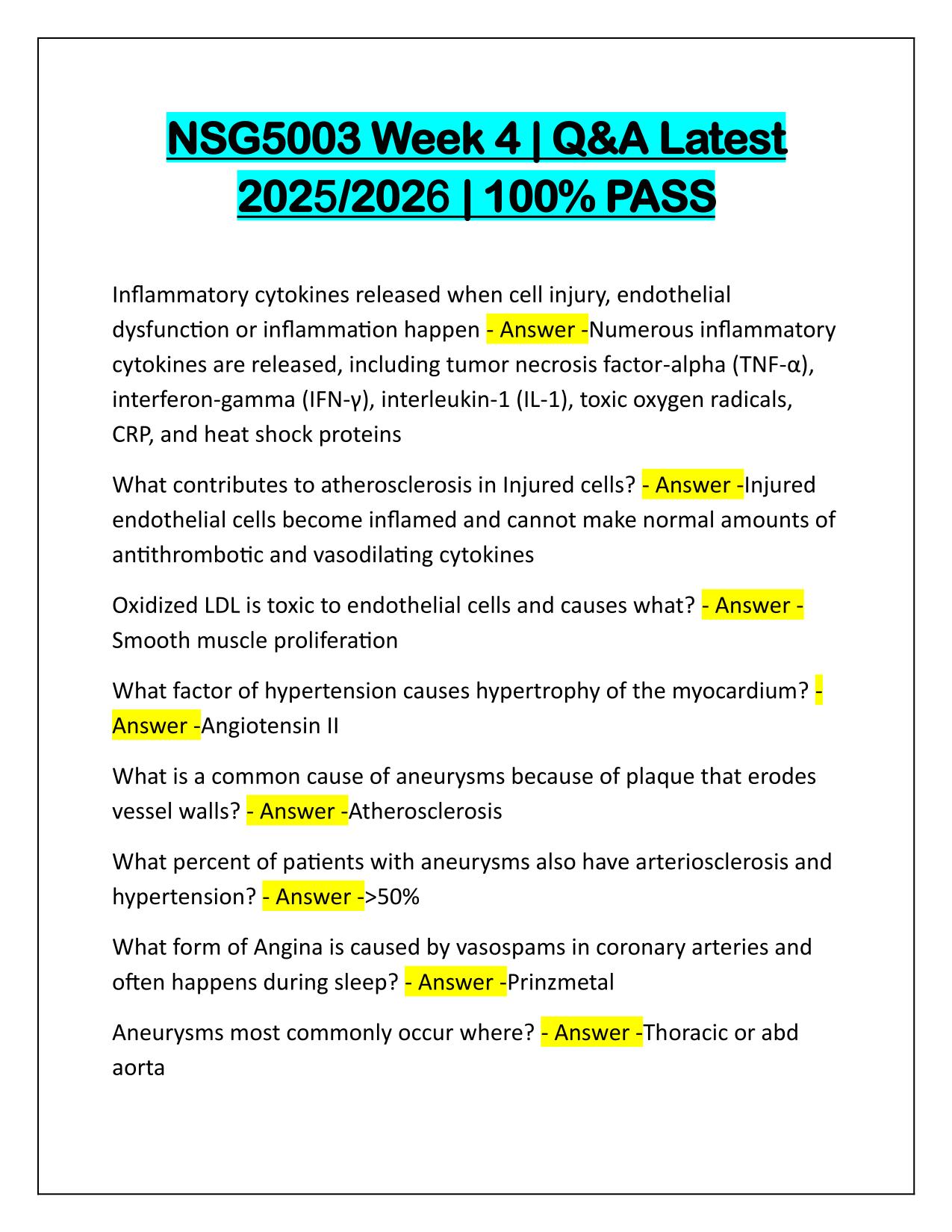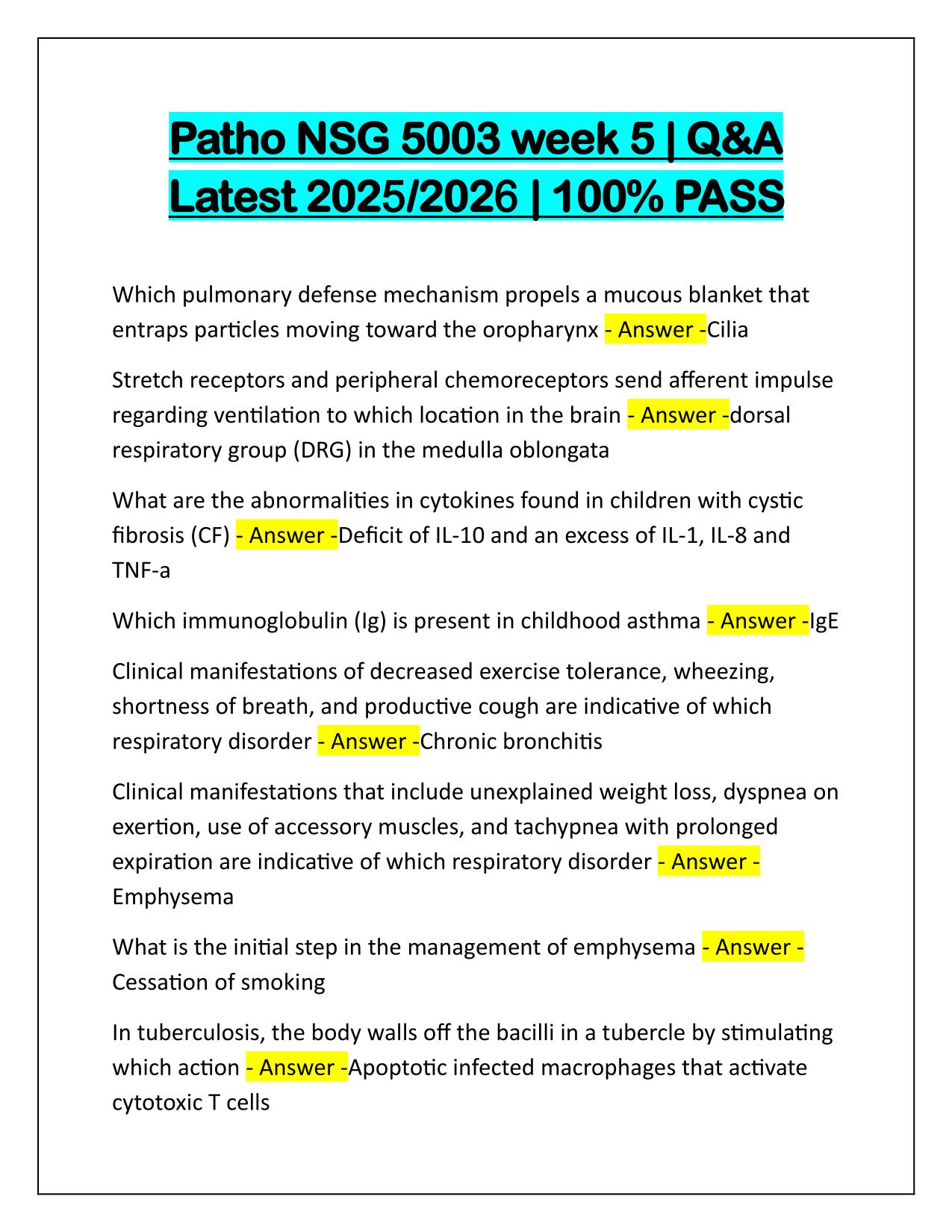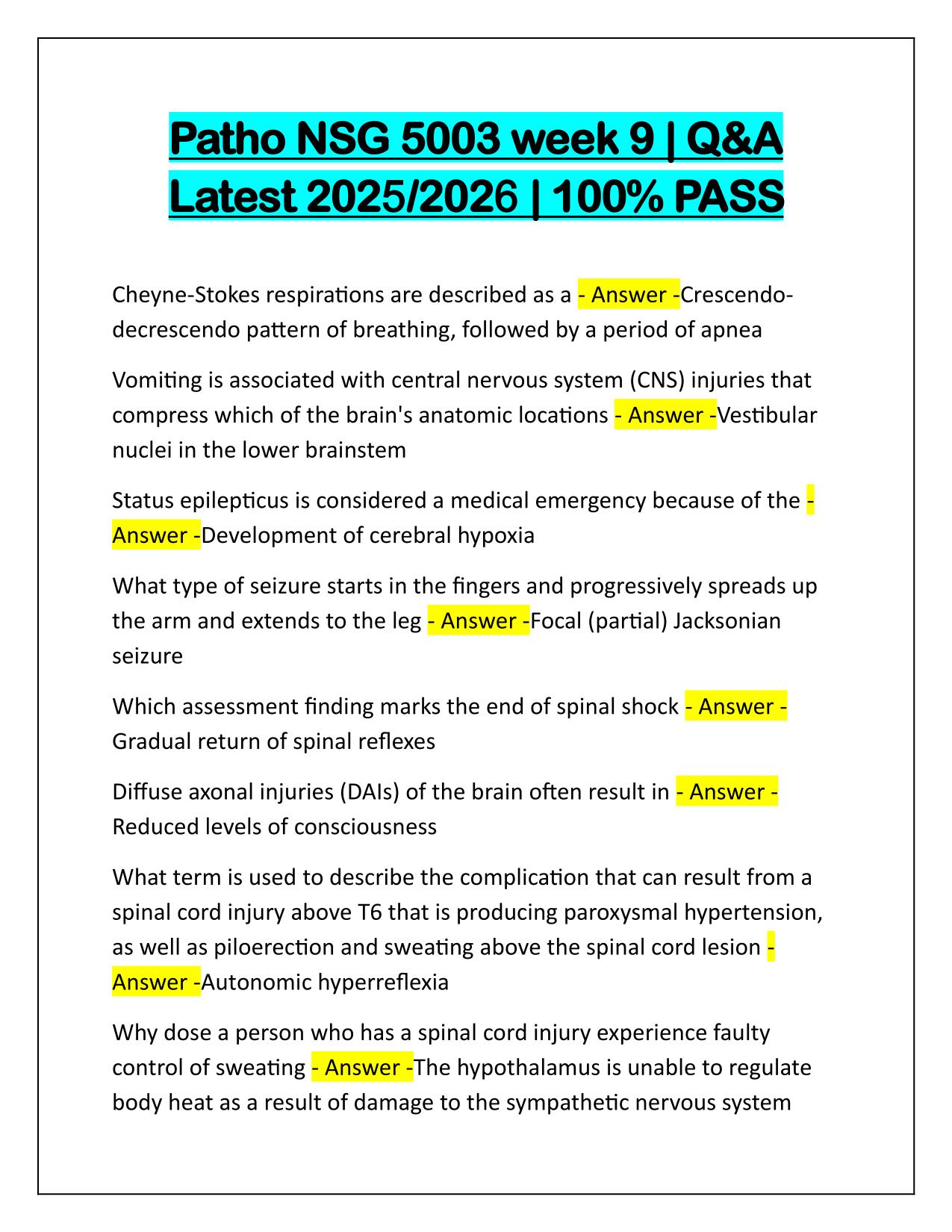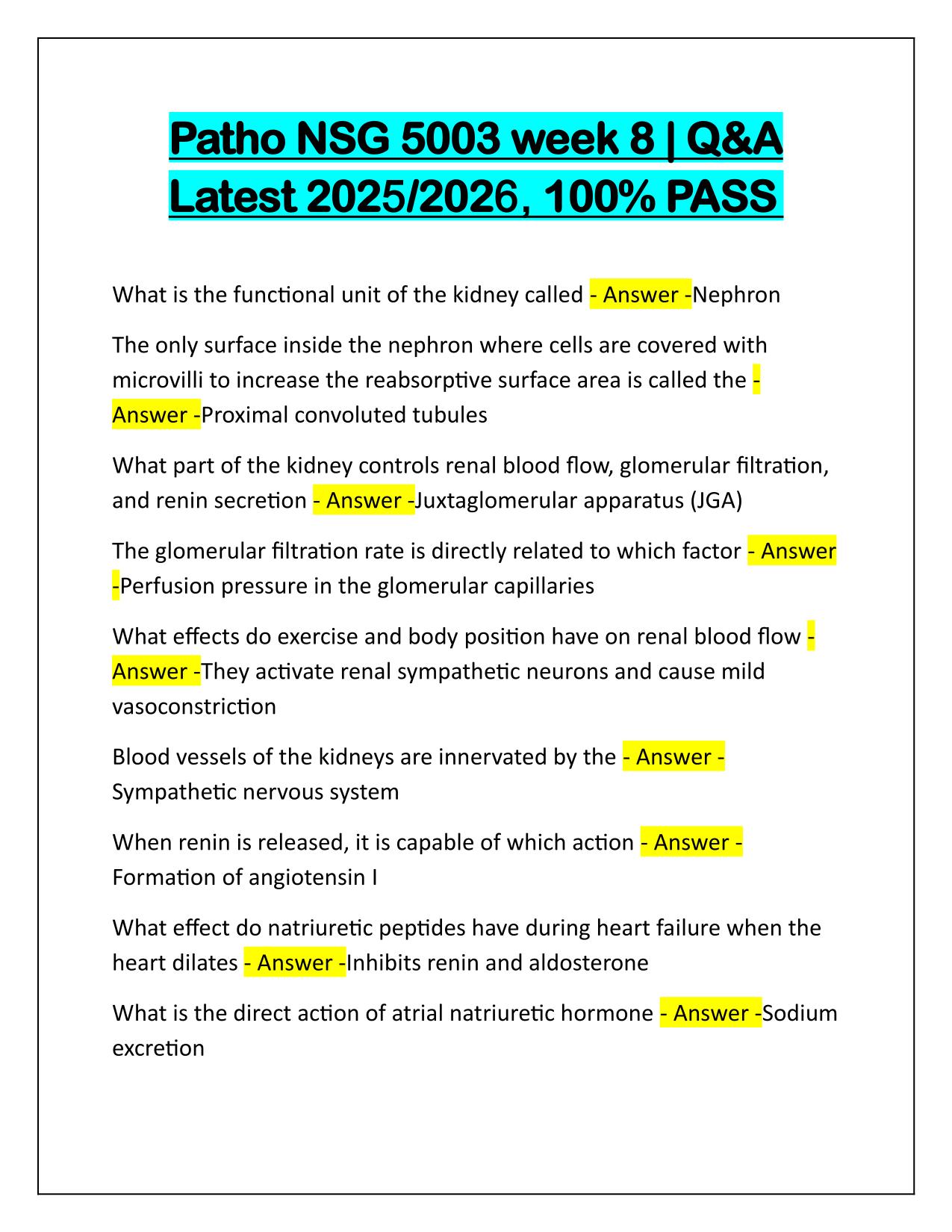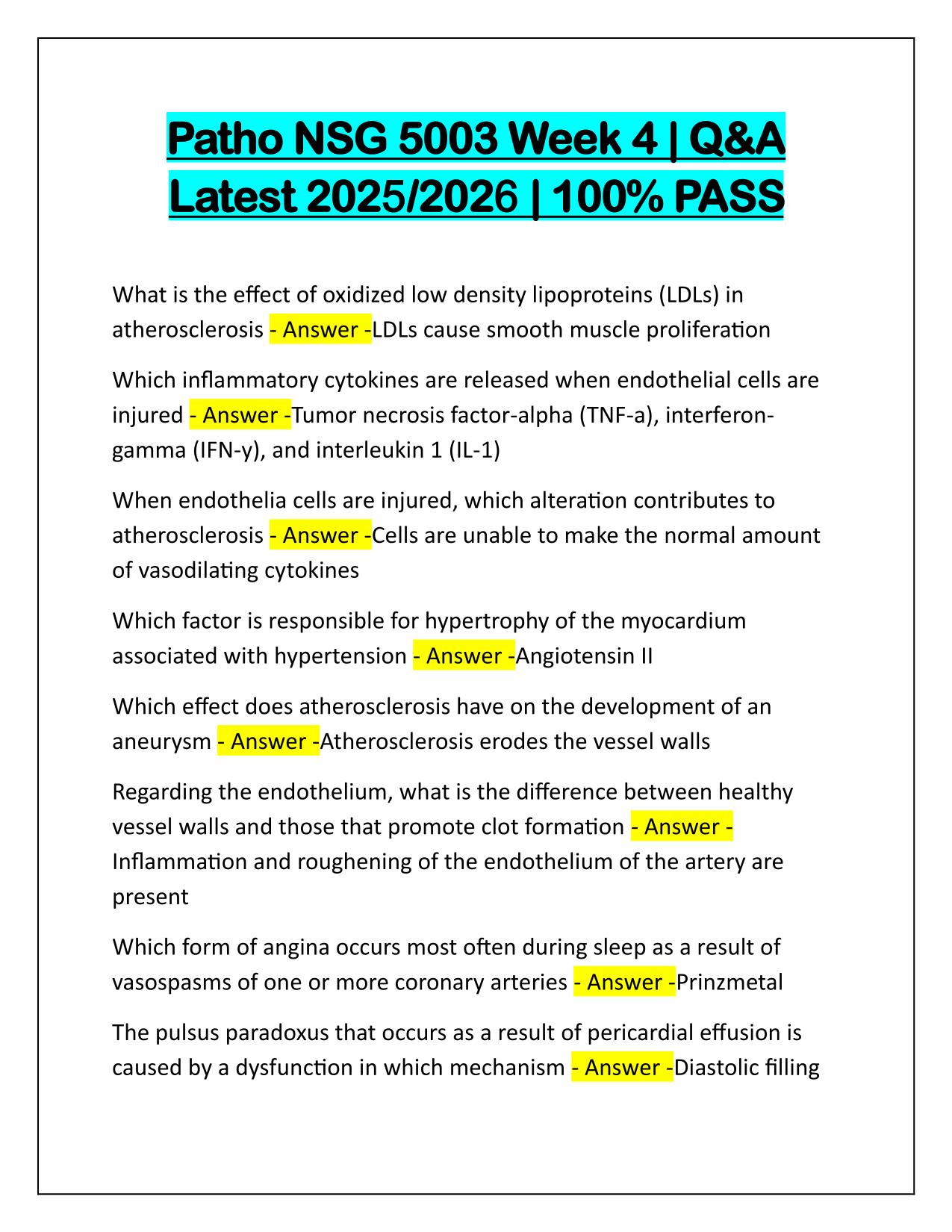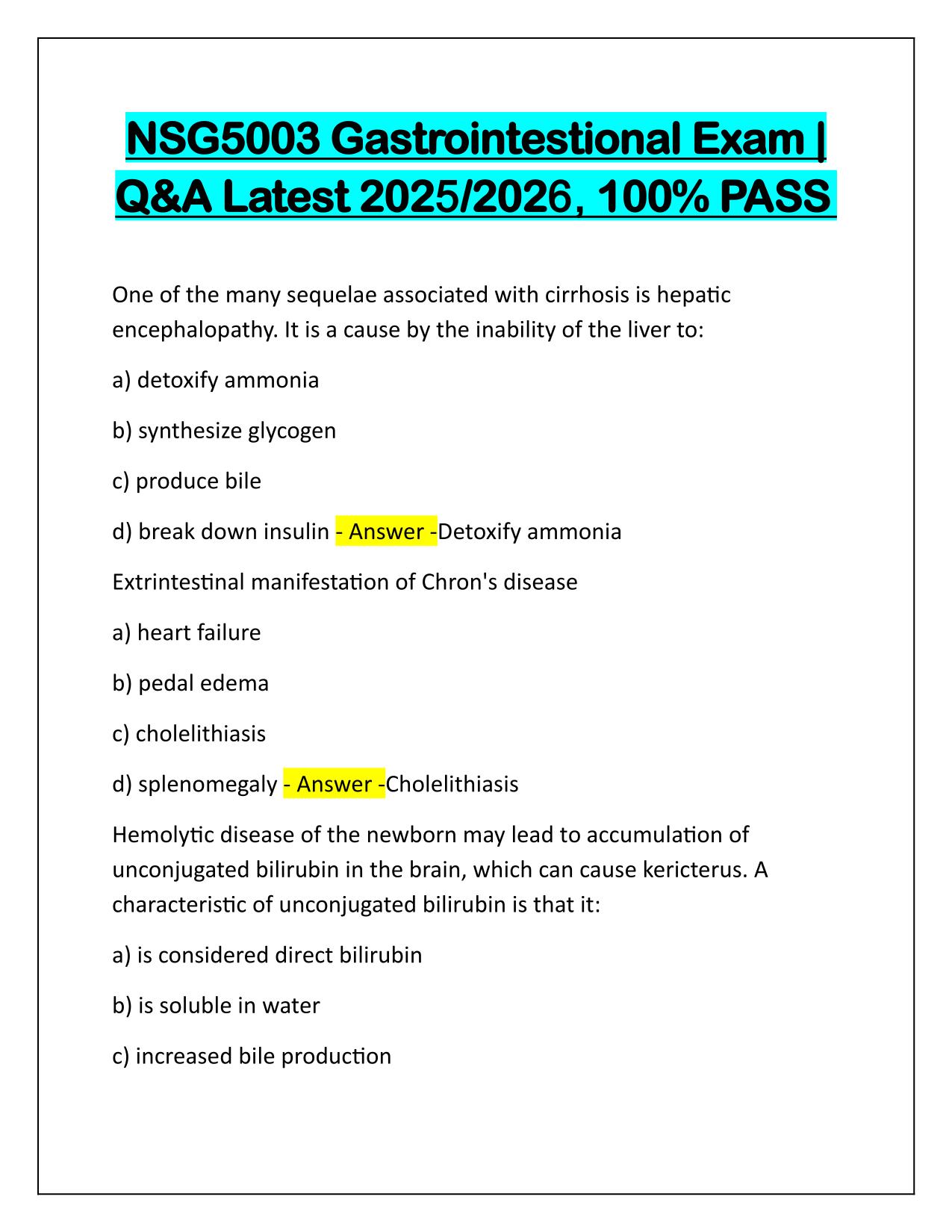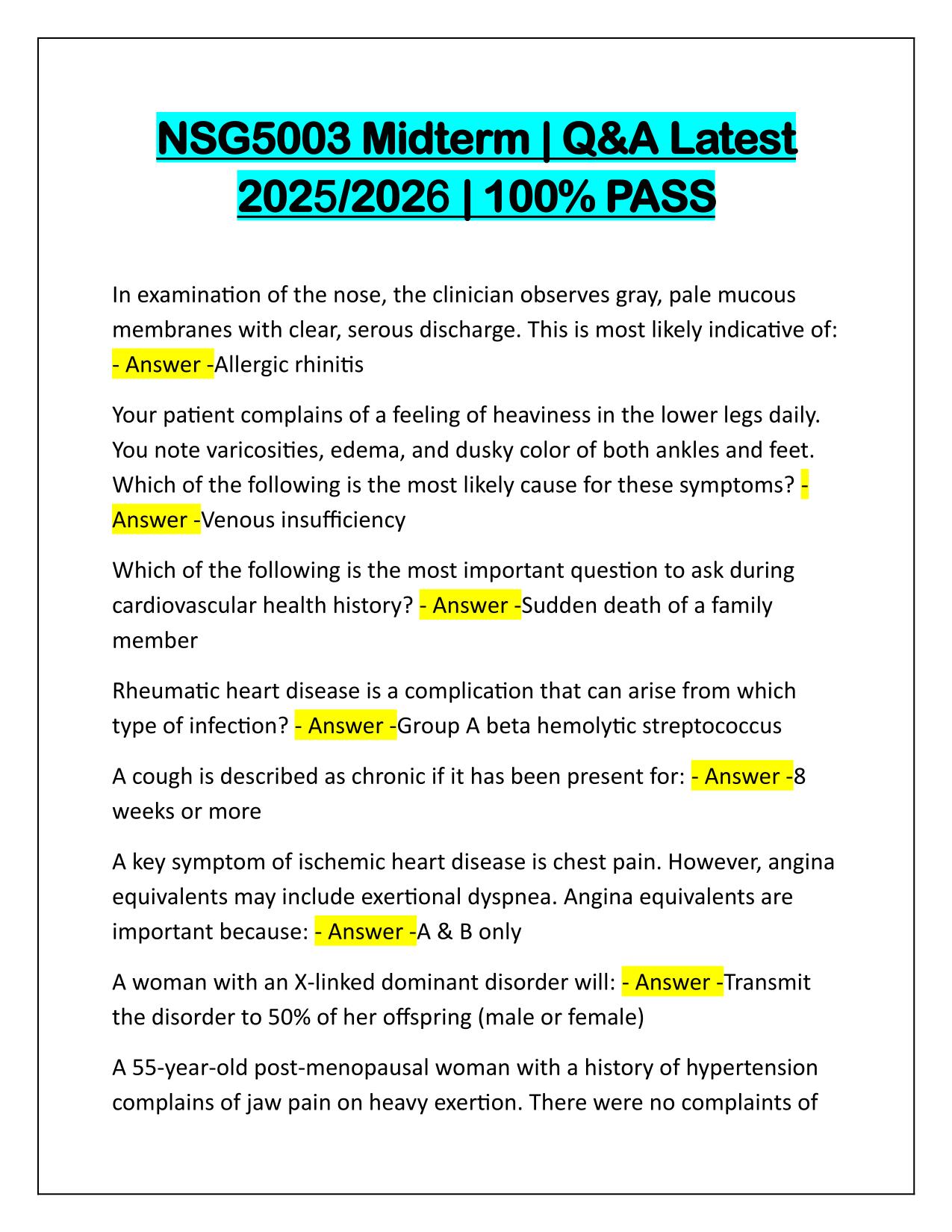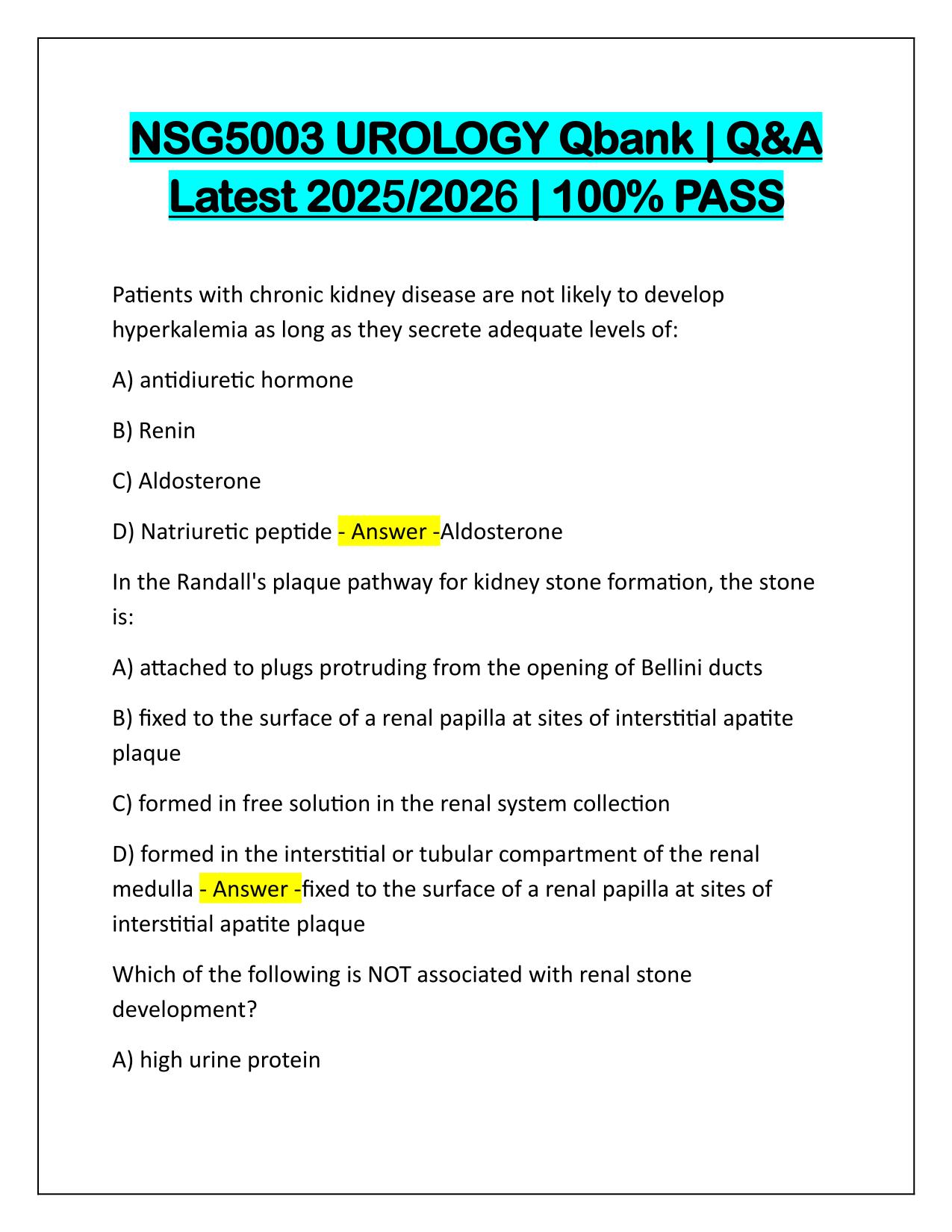Patho NSG 5003 Midterm Q&A Latest Update
Course:
NSG 5003
Institution:
NSG 5003
Patho NSG 5003 Midterm Q&A Latest Update
After purchase, you get:
✅ Instant PDF Download
✅ Verified answer explanations
✅ Refund if not Satisfied
✅ Prepared for 2025/2026 test cycle
Document Information
| Uploaded on: | May 4, 2025 |
| Last updated: | May 12, 2025 |
| Number of pages: | 15 |
| Written in: | 2025/2026 |
| Type: | Exam (elaborations) |
| Contains: | Questions & Answers |
| Tags: | Patho NSG 5003 Midterm Q&A Latest Update |
Seller Information

AdelineJean
User Reviews (0)
Exam (Elaborations)
$9.00
Bundle Deal! Get all 13 docs for just $23.99
Add to Cart
100% satisfaction guarantee
Refund Upon dissatisfaction
Immediately available after purchase
Available in Both online and PDF
$9.00
| 0 sold
Discover More resources
Available in a Bundle
Content Preview
Patho NSG 5003 Midterm | Q&A Latest 2025/2026 | 100% PASS Respirations that are characterized by alternating periods of deep and shallow breathing are a result of which respiratory mechanism - Answer -Decreased blood flow to the medulla oblongata what pulmonary defense mechanism propels a mucous blanket that entraps particles moving toward the oropharynx - Answer -cilia which term is used to identify the movement of gas and air into and out of the lungs - Answer -ventilation aspiration is most likely to occur in the right mainstream bronchus because it - Answer -extends vertically from the trachea when an individual aspirates food particles, where would the nurse expect to hear decreased or absent breath sounds - Answer -right lung which describes the pressure in the pleural space - Answer -below atmospheric what medical term is used for a condition that results from pulmonary hypertension, creating chronic pressure overload in the right ventricle Answer -cor pulmonale which normal physiologic change occurs in the aging pulmonary system - Answer -stiffening of the chest wall Pulmonary artery hypertension (PAH) results from which alteration Answer -narrowed pulmonary capillaries
